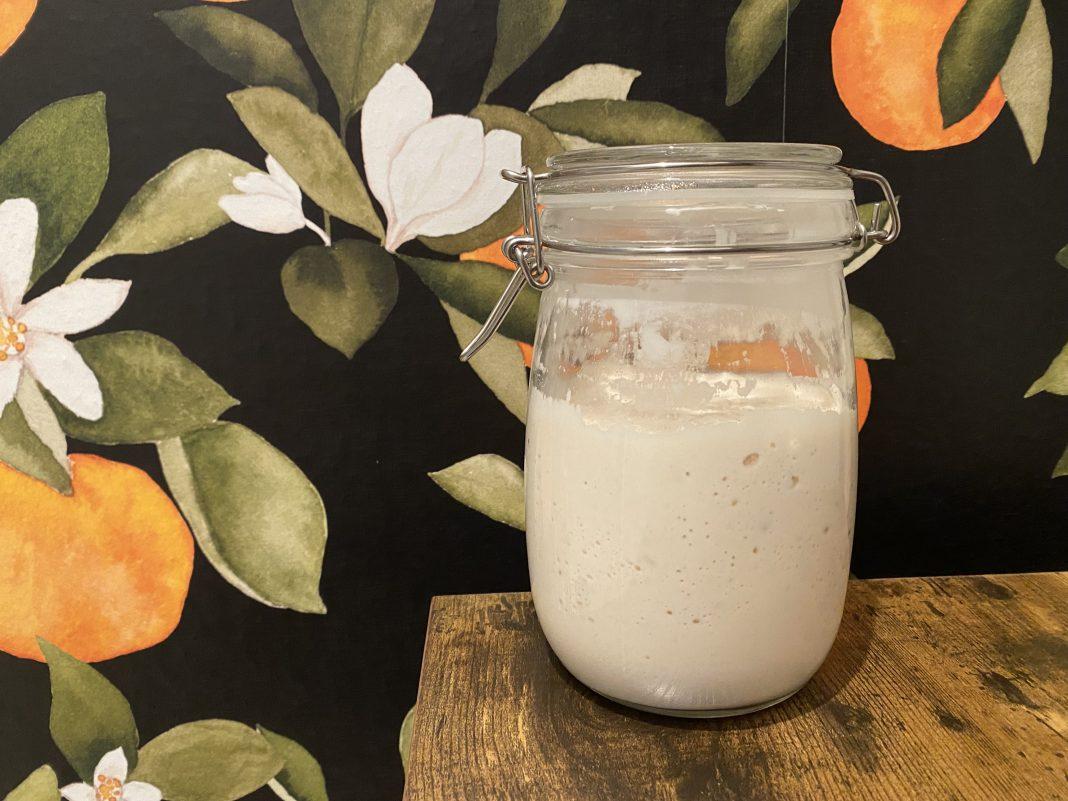I have been baking sourdough bread for a while now and my container of sourdough starter has been on a cross country road trip! However, earlier this month, it got exposed to unnecessary heat (totally my fault) and it got the tell tale sign of death, orange streaks on the top indicating a bacterial infection. There is no coming back from this bacterial infection, the starter is dead and cannot be revived.
Did I cry?
Sure did.
I hid in the pantry and cried for my sourdough starter.
That’s never a sentence I thought I would say.
But apparently I am attached to it.
So, with a sense of determination, I am restarting my sourdough starter and I am finally going to take a moment to write down how I do it so that you too can join me on the sourdough bread adventure. Trust me, you won’t want to stop.
Here is how you can start your very own sourdough starter with nothing more than a jar, food scale, flour and water:
- I washed and sanitized my container. I didn’t want there to be any chance the bacteria stayed in the container when I went to restart, so I washed it in the dishwasher on high heat. If you are starting from scratch, buy yourself a cute jar and be sure to wash it out properly.
- I measured 100 grams of white flour into the container and added 100 grams of filtered water to it. You will want to invest in a food scale so that these measurements are exact – you will also need it to make the bread. You let this mixture sit overnight. In the morning, it will have some bubbles in it. Don’t get too excited yet, this isn’t a sign that you have active starter yet.
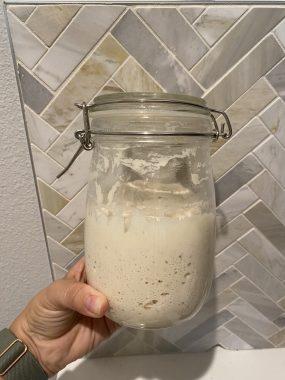
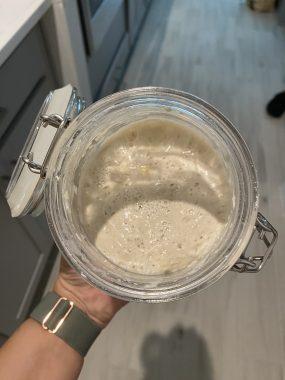
- Add 50 grams of the same flour you used in step 2 and 50 grams of water to your container, mix until it is all incorporated. It may appear lumpy, that’s fine! Let it sit overnight.
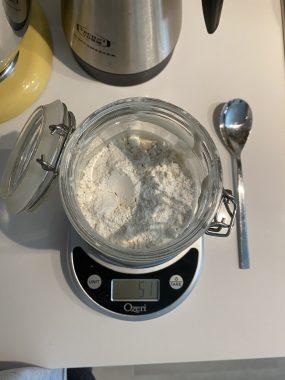
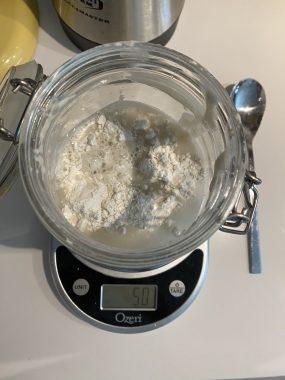
- Throw out one half of the overall mixture. There are recipes that use ‘sourdough starter discard’ but you really want to use an active starter discard for these recipes. I love to make crackers with my discard (one day I will write the recipe down, I promise). Just throw out half of the mixture, add another round of 50 grams flour and 50 grams water, mix and let rest overnight.
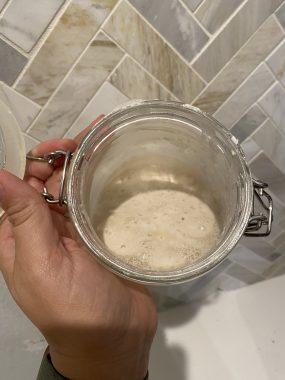
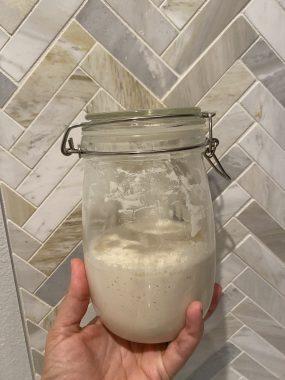
- Repeat the cycle of feeding, waiting 18 – 24 hours and wasting half on repeat until your starter will double in size before it falls consistently. This time it took my starter 7 feedings to get to this point. It has taken me longer to start a sourdough starter from scratch before, so if you do it 7 times and it has not worked, do not lose hope… keep going and eventually your starter will look like this after a feeding:
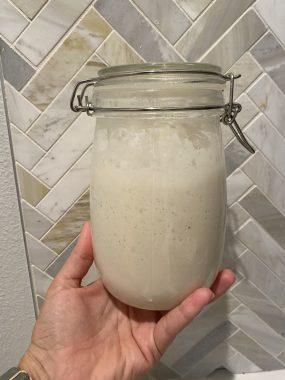
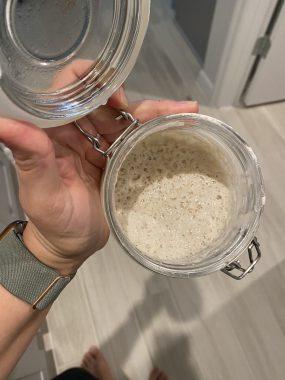
- Make some bread!! Make pumpkin rolls! Make peppermint rolls! Make cinnamon rolls! Make whatever your heart desires!
- Be sure to feed your starter about 18 – 24 hours before you make the dough for your next recipe. At this point in your starter journey, you can feed it with 50 grams of flour and 25 grams of filtered water. If you will be away for an extended period or won’t be making anything with your sourdough starter, pop it in the fridge to be sure it doesn’t starve while it isn’t being used. It may take a feeding or two after you take it out of the fridge for it to bubble and react like you want it, but this way you won’t have to start over if it is not used for a while!







